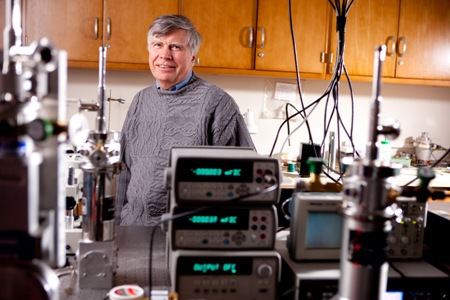Scientists from the University at Buffalo (UB), together with researchers from the Air Force Office of Scientific Research and the U.S. Army Research Laboratory have demonstrated a nanomaterial-based technology to enhance the electrical output of a solar cell by embedding charged quantum dots into it and by improving the lifespan of photoelectrons.
 Electrical engineer Vladimir Mitin and colleagues have significantly increased the electrical output of solar cells by embedding charged quantum dots in them.
Electrical engineer Vladimir Mitin and colleagues have significantly increased the electrical output of solar cells by embedding charged quantum dots in them.
The embedded quantum dots allow the solar cell to collect not only the visible light but also the invisible infrared light. The UB research team comprising Nizami Vagidov, Andrei Sergeev and Vladimir Mitin has established a company named OPtoElectronic Nanodevices to commercialize the novel technology.
So far, researchers have achieved limited success in enhancing the electrical output of solar cells through embedded quantum dots. Besides successfully utilizing the embedded quantum dots for collecting infrared light, the UB research team and its military colleagues have advanced the technology by making the quantum dots inside the photovoltaic cell to have a substantial built-in charge using selective doping. This built-in charge helps in repelling electrons, causing them to move around the quantum dots. Or else, the quantum dots form a recombination channel to capture the travelling electrons, thus avoiding the electrons from contributing to electricity production. The UB research team has named these quantum dots having a built-in-charge as ‘Q-BICs.’
According to Mitin, the novel technology can improve solar cell efficiency by up to 45%. The UB research team has submitted provisional patent applications for its technology through the university’s Office of Science, Technology Transfer and Economic Outreach. OPtoElectronic Nanodevices is now in search of funds from federal programs and private investors in order to optimize and commercialize the technology.